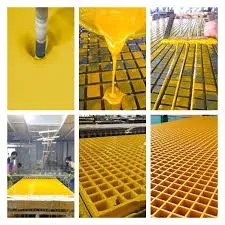
-
 Afrikaans
Afrikaans -
 Albanian
Albanian -
 Amharic
Amharic -
 Arabic
Arabic -
 Armenian
Armenian -
 Azerbaijani
Azerbaijani -
 Basque
Basque -
 Belarusian
Belarusian -
 Bengali
Bengali -
 Bosnian
Bosnian -
 Bulgarian
Bulgarian -
 Catalan
Catalan -
 Cebuano
Cebuano -
 China
China -
 China (Taiwan)
China (Taiwan) -
 Corsican
Corsican -
 Croatian
Croatian -
 Czech
Czech -
 Danish
Danish -
 Dutch
Dutch -
 English
English -
 Esperanto
Esperanto -
 Estonian
Estonian -
 Finnish
Finnish -
 French
French -
 Frisian
Frisian -
 Galician
Galician -
 Georgian
Georgian -
 German
German -
 Greek
Greek -
 Gujarati
Gujarati -
 Haitian Creole
Haitian Creole -
 hausa
hausa -
 hawaiian
hawaiian -
 Hebrew
Hebrew -
 Hindi
Hindi -
 Miao
Miao -
 Hungarian
Hungarian -
 Icelandic
Icelandic -
 igbo
igbo -
 Indonesian
Indonesian -
 irish
irish -
 Italian
Italian -
 Japanese
Japanese -
 Javanese
Javanese -
 Kannada
Kannada -
 kazakh
kazakh -
 Khmer
Khmer -
 Rwandese
Rwandese -
 Korean
Korean -
 Kurdish
Kurdish -
 Kyrgyz
Kyrgyz -
 Lao
Lao -
 Latin
Latin -
 Latvian
Latvian -
 Lithuanian
Lithuanian -
 Luxembourgish
Luxembourgish -
 Macedonian
Macedonian -
 Malgashi
Malgashi -
 Malay
Malay -
 Malayalam
Malayalam -
 Maltese
Maltese -
 Maori
Maori -
 Marathi
Marathi -
 Mongolian
Mongolian -
 Myanmar
Myanmar -
 Nepali
Nepali -
 Norwegian
Norwegian -
 Norwegian
Norwegian -
 Occitan
Occitan -
 Pashto
Pashto -
 Persian
Persian -
 Polish
Polish -
 Portuguese
Portuguese -
 Punjabi
Punjabi -
 Romanian
Romanian -
 Russian
Russian -
 Samoan
Samoan -
 Scottish Gaelic
Scottish Gaelic -
 Serbian
Serbian -
 Sesotho
Sesotho -
 Shona
Shona -
 Sindhi
Sindhi -
 Sinhala
Sinhala -
 Slovak
Slovak -
 Slovenian
Slovenian -
 Somali
Somali -
 Spanish
Spanish -
 Sundanese
Sundanese -
 Swahili
Swahili -
 Swedish
Swedish -
 Tagalog
Tagalog -
 Tajik
Tajik -
 Tamil
Tamil -
 Tatar
Tatar -
 Telugu
Telugu -
 Thai
Thai -
 Turkish
Turkish -
 Turkmen
Turkmen -
 Ukrainian
Ukrainian -
 Urdu
Urdu -
 Uighur
Uighur -
 Uzbek
Uzbek -
 Vietnamese
Vietnamese -
 Welsh
Welsh -
 Bantu
Bantu -
 Yiddish
Yiddish -
 Yoruba
Yoruba -
 Zulu
Zulu
Design and Applications of GRP Winding Machines in Modern Manufacturing
Understanding GRP Winding Machines A Comprehensive Overview
GRP winding machines, commonly known for their advanced glass-reinforced plastic technology, are pivotal in the manufacture of composite materials. These machines play a crucial role in various industries, including aerospace, automotive, marine, and construction. By providing a systematic approach to winding processes, they ensure the production of high-quality, lightweight components with exceptional strength-to-weight ratios.
What is GRP Winding?
Glass-reinforced plastics (GRP) are composite materials that utilize glass fibers within a resin matrix. The winding process involves the application of these glass fibers over a mandrel in a specific pattern. This technique enhances the structural integrity of the product while reducing weight. The winding can be done using various methods, including filament winding, which is one of the most common techniques employed by GRP winding machines.
The Working Principle of GRP Winding Machines
The operation of GRP winding machines can be broken down into several key stages
1. Material Preparation Before winding, the glass fibers and resin are prepared. Fiber strands are unwound from spools, and the resin is often mixed with hardeners to initiate the curing process once applied.
2. Mandrel Positioning The mandrel, which forms the shape of the final product, is set up on the machine. Its surface can be treated to facilitate the release of the finished product.
3. Winding Operation The machine precisely controls the tension and angle of the glass fibers as they are wound around the mandrel. This process can be automated, ensuring consistency and minimizing human error. The computer numerical control (CNC) capabilities allow for complex designs and patterns to be adhered to, improving the efficiency of production.
4. Curing After winding, the composite material must be cured. Depending on the resin used, this can involve heating or allowing it to cure at room temperature. Proper curing is essential for achieving optimal mechanical properties in the finished product.
5. Demolding Once cured, the GRP structure is carefully removed from the mandrel. This step is critical, as any damage during demolding can compromise the integrity of the final component.
6. Finishing Touches Finally, the GRP product may undergo additional processing such as sanding, painting, or additional finishing to meet specific aesthetic or functional requirements.
Advantages of Using GRP Winding Machines
grp winding machine

The implementation of GRP winding technology presents numerous advantages
- Strength and Durability Components produced through the GRP winding process have high tensile strength and are resistant to corrosion, making them ideal for demanding environments.
- Weight Reduction The lightweight nature of GRP contributes to enhanced energy efficiency in applications such as transportation and aviation. Reducing weight is crucial in these industries, as it can lead to lower operational costs and improved performance.
- Versatility in Design The ability to customize the winding patterns allows for a wide range of shapes and sizes, accommodating diverse project specifications. This flexibility proves beneficial for manufacturers looking to innovate.
- Cost-Effectiveness While the initial investment in GRP winding machines may be substantial, the efficiency and speed of production combined with reduced material waste ultimately lead to cost savings.
Applications of GRP Winding Machines
The use of GRP winding machines is extensive, with applications spanning various sectors
- Aerospace Lightweight components for aircraft structures, helping to improve fuel efficiency.
- Automotive Production of parts such as fuel tanks and body panels that require high strength and lightweight properties.
- Marine Manufacturing of hulls and masts, which benefit from the water-resistant properties of GRP.
- Construction Utilizing GRP for pipes and structural components that withstand harsh environmental conditions.
In conclusion, GRP winding machines are instrumental in advancing modern manufacturing methods. Their ability to produce high-strength, lightweight materials through a systematic and controlled process highlights their significance across various industries. As technology progresses, the capabilities of GRP winding machines are expected to expand further, driving innovation and efficiency in composite material production.









